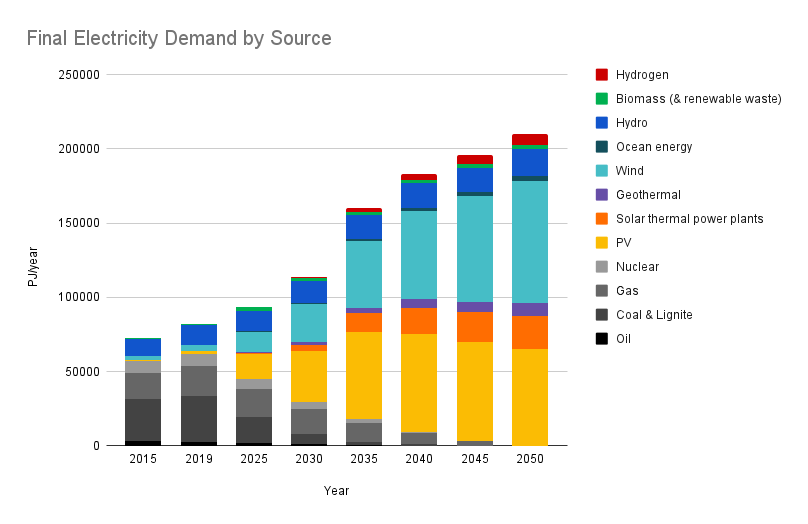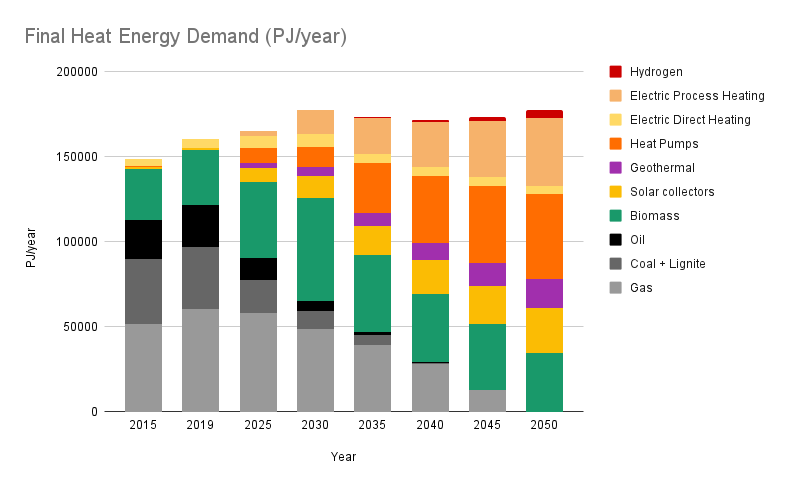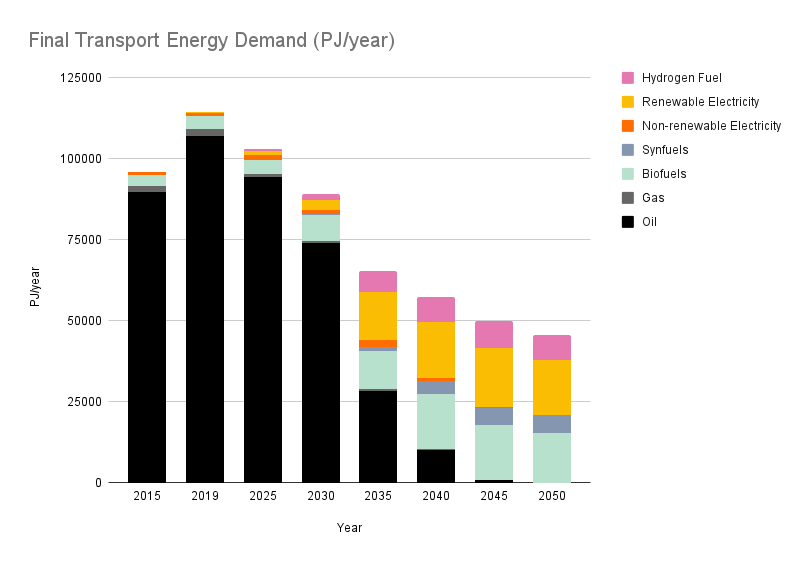Scientists chart a new course to reach ‘net zero’ emissions for all sectors of the global economy by 2050
According to the latest International Panel on Climate Change report (IPCC-AR6), a series of dangerous tipping points are likely to occur if global temperature rise exceeds 1.5˚C, resulting in unstoppable climate impacts. The philanthropic organization One Earth (OE) supported some of the world’s top scientists to answer this one question:
Can we still achieve the 1.5°C limit, and if so, how?
This led to the creation of the first One Earth Climate Model in 2019, published in the influential book Achieving the Paris Climate Agreement Goals. With the backing of the Net Zero Asset Owner’s Alliance, Volume 2 of the book has just been published using an updated, high-resolution energy transition model. This offers for the first time specific targets to help the financial industry decarbonize all sectors of the global economy. It factors in the latest climate science, reductions in emissions from COVID-19, and rapidly declining costs of clean energy technologies.
The updated model improves on OECM 1.0 in many ways, but most significantly by increasing the technical resolution across specific industries. The main driver for energy demand in the first model was based on global population and global GDP projections. The updated model achieved more granularity by instead including industry-specific drivers such as annual production volumes and market forecasts e.g. tons of steel per year. These changes allowed for the creation of a bottom-up energy demand scenario for each sub-sector. This level of detail will allow the finance sector to develop emissions benchmarks and create time-bound targets to track their investments toward a net-zero goal.
The findings of this research are clear: it is still possible to achieve the 1.5°C limit, but it will require two major efforts — a shift to 100% renewable energy globally and a major effort to protect and restore nature. Where other models rely on the continued use of fossil fuels and unproven technologies like carbon capture and sequestration, the OE Climate Model demonstrates that the most cost-effective pathway to solving climate change is also the best for people and the planet.
It goes without saying, transitioning the entire global economy to net-zero emissions is an extraordinarily complex undertaking. So, One Earth is here to help, breaking down the major components of the global energy transition.
100% Renewable Energy for all Sectors of the Global Economy
The OE model for transitioning to 100% renewables is surprisingly affordable—less than 2% of GDP annually. According to the study, “…a 100% renewable energy system will be significantly cheaper than our current system, unlocking trillions in additional GDP while stimulating the economy through millions of new jobs and billions of dollars in avoided climate and health costs." This is far cheaper than current annual fossil fuel subsidies, which are about $5.9 trillion. And when you factor in the public health benefits of clean energy, the transition becomes a no-brainer. Currently, the burning of fossil fuels causes air and water pollution, resulting in 4.2 million premature deaths per year. Achieving 100% renewable energy will save trillions in avoided health costs and loss of life.
So, what are we waiting for? Let’s get transitioning. ... It all starts with a budget. In order to meet that 1.5˚C goal, the IPCC agreed upon a remaining “carbon budget” of 400 billion tonnes of CO2 starting in 2020. For context, humanity emitted about 40 billion tons of CO2 in 2019. If we maintained business-as-usual, we’d run out of our budget within a decade. So, the scientists behind the OE model divvied up the remaining carbon budget for key industry sectors, weighting each according to their projected growth and energy demand. This is reverse engineered to determine how rapidly we will have to phase out various fossil fuels and how we can replace them with 15 renewable energy carriers. Below is what the energy transition would look like if we were to optimize a full phase-out of fossil fuels by 2050:

Total energy demand by source showing fossil fuels being “pinched out” by renewable electricity, heat, and fuels. Note: although the dip in emissions due to the COVID-19 pandemic was included in the model, the dip does not show when plotted with these 5-year intervals. Data based on the One Earth Climate Model, Teske 2022. Image Credit: Spencer Scott, One Earth.
These carbon mitigation targets can be organized across four major energy modalities -- Power, Heat, Transport, and Efficiency. Below is a quick overview of the key findings for each:
Power
Power is the fastest moving transition, renewables accounting for about 30% of electricity generation today. Renewables are now the cheapest option for new power capacity, with utility-scale solar reaching the lowest average price for electricity of any energy source in history. The competitive prices of wind and solar, in particular, make the transition to clean power nearly inevitable, but we will need to step up the pace in order to hit the goal of 73% renewable power by 2030. Not only will the supply of electricity change, so will the demand. Cars and building heat will increasingly be powered by electricity instead of fossil fuels, and where electricity can’t meet the needs, renewable fuels will be utilized instead. This will require government policies to encourage renewable electricity and grid storage capacity.

Electricity demand by source showing a phase-out of fossil fuels and an overall increase in total electricity production as heat and transportation become electrified. Data based on the One Earth Climate Model, Teske 2022. Image Credit: Spencer Scott, One Earth.
Heat
Heat is primarily generated through combustion of energy-dense fossil fuels and also wood fuel to warm our homes and cook our food. In industrial sectors, extremely high heat processes are needed to melt steel, facilitate chemical reactions, and produce lime for cement. Contrary to popular opinion, it is possible to transition all of these energy needs to renewable sources by the middle of the century. In residential and commercial buildings, heat will be provided using heat pumps that are vastly more energy efficient than conventional heating methods. On the industry side, heat will be created with renewable liquid fuels, hydrogen made using renewable energy, and advanced electrical heating methods. District heating, solar heating, and geothermal heating will also play significant roles in the transition.
The OE model calls for a shift from approximately 25% renewables (mostly biomass) for heating today to more than 50% renewables by 2030.

Heat production by source showing a phase-out of fossil fuels and a slight increase in total heat production as global population rises. Data based on the One Earth Climate Model, Teske 2022. Image Credit: Spencer Scott, One Earth.
Transportation
Transportation is being reinvented as we speak. The costs of batteries and electric vehicles have dropped off a mountainside in the past decade, and EV charging infrastructure is expanding rapidly. The coming decade will see electric vehicles become more than cost-competitive and will see hundreds of new models released, offering greater and greater diversity. Nearly every automaker sees the writing on the wall that electric powertrains are the future, and some have indicated target years (whether 2025, 2030, or 2035) for 100% electric vehicle production and sales. Globally, an increase in both passenger and rail transit is also needed to help the electrification of transport. Harder to electrify modes of transit like aviation and shipping will be supplemented with renewable fuels like sustainable biofuel and green hydrogen.
Overall, the OE model calls for a shift from approximately 5% renewable transport today to 50% by 2035.

Transportation energy by source showing a phase-out of fossil fuels and a large decrease in total energy demand as very inefficient internal combustion engines are replaced with electric motors. Data based on the One Earth Climate Model, Teske 2022. Image Credit: Spencer Scott, One Earth.
Energy Efficiency
Energy efficiency doesn’t get mentioned as much, but it’s a huge and vitally important part of the energy transition. Despite an increasing need for heat, electricity, and transportation as the global population grows, total energy demand in the OE model will actually decrease due to gains in efficiency across all sectors. Transport will become 75% more energy efficient due to lighter vehicles, electrification, high-speed rail, and virtual working. Buildings will become 40% more energy efficient due to new low-energy building codes, green retrofits, passive cooling & heating, and efficient heat pumps.
Lighting and electronic appliances will require less and less power, and electricity generation itself will become much more efficient due to smarter power transmission and the phase-out of fossil fuel extraction and processing, which now accounts for nearly 10% of all energy-related emissions.
The One Earth Energy transition model is a breakthrough because it changes the frame of discussion — the key question is no longer “can we?” It’s “will we?” We don’t need to wait for novel technologies. There is a clear pathway to success with meaningful, effective solutions that can be implemented immediately. What’s required now is an acceleration of funding from governments and the private sector -- tripling spending on climate mitigation (from roughly half a trillion dollars today to approximately 1.5 trillion a year).
The research also tells us, despite the seemingly large price tag, we can create a clean energy future for less than one-third of what we’re spending now while improving energy access, sustainable livelihoods, and health outcomes in every country on Earth.
Learn more about the One Earth Climate Model.jpg?auto=compress%2Cformat&w=1440)


